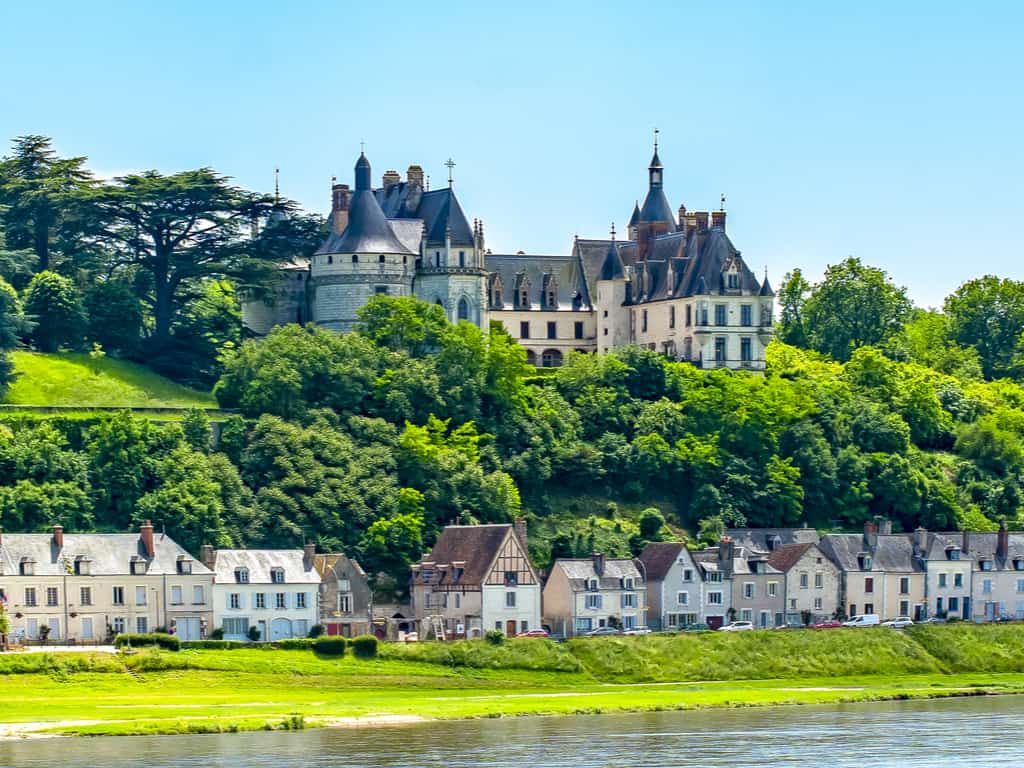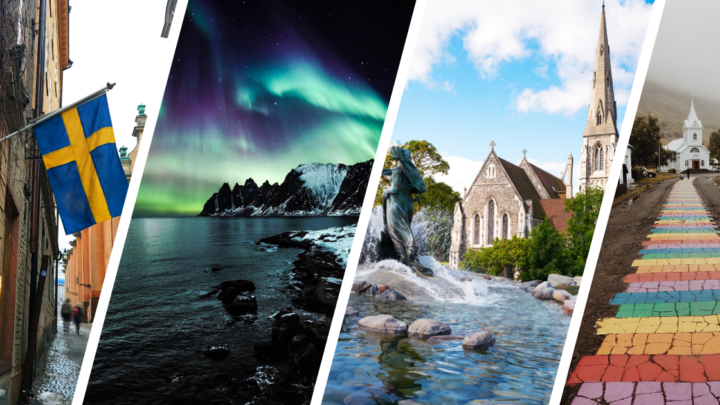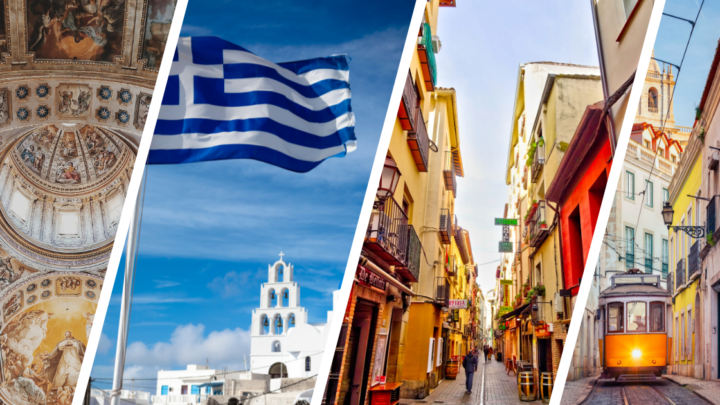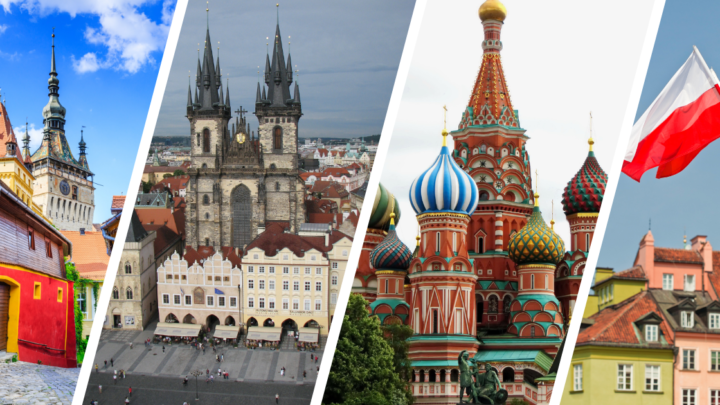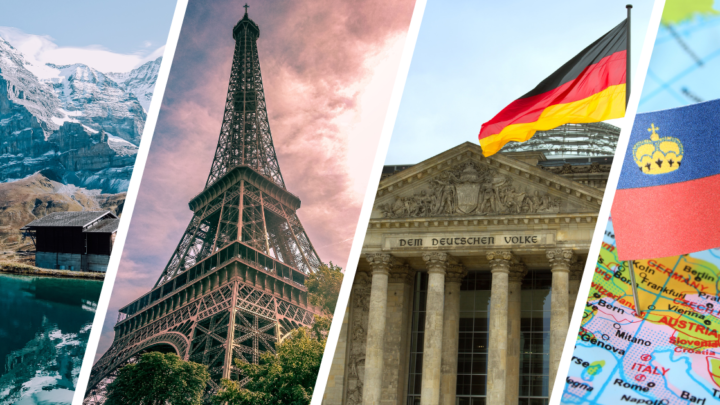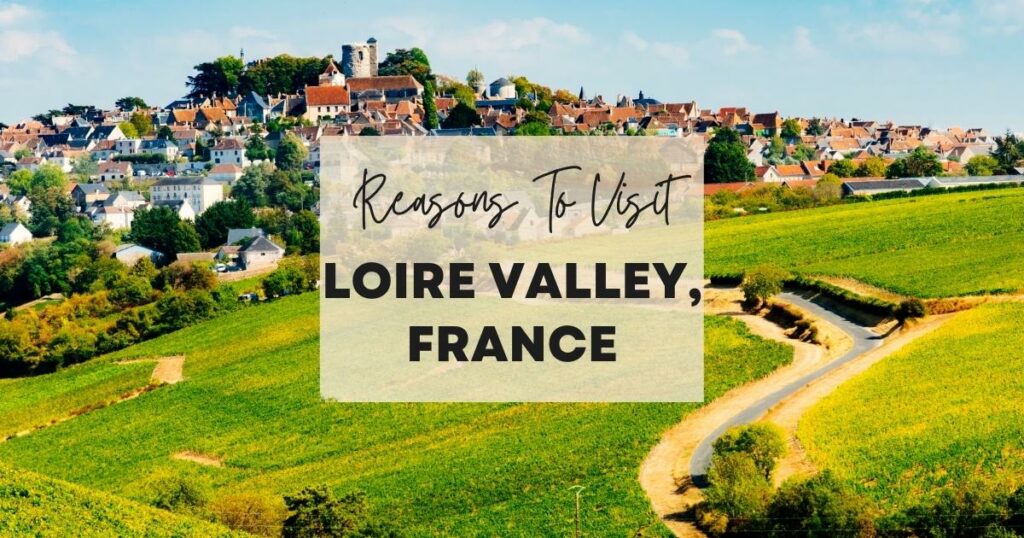Ready to pack your bags and head to Loire Valley, France? Make the most of your vacation time in Loire Valley, France, we have compiled a list of our favorite things to do in Loire Valley, France. Explore the top attractions and activities in the best places to go in Loire Valley, France, by scrolling down! We at Wondrous Drifter, a Web 3.0 travel startup, have big plans to shake things up in the travel business.
Table Of Content
Château de Chambord

Wowing visitors over five centuries, Chateau de Chambord remains today an iconic building, making it one of France’s most famous palaces!
The most famous French Renaissance structure, Château de Chambord, sits majestically on the Loire’s left bank. Château de Versailles was inspired by this majestic royal castle, which is a sight to behold.
This historic mansion is available to the public. It features a museum devoted to the Comte de Chambord and rooms for temporary exhibitions and other functions, including stables and English gardens. A notable collection of tapestries dating from the sixteenth to nineteenth centuries CE may be seen in Chambord.
These masterpieces of textile art depict biblical stories, Greek mythology, and historical personalities. They were chosen for the collection because they originally hung at Chambord or represented the castle or hunting as their theme.
Chambord is definitely a must-visit in the Loire Valley, with only about a trip that takes two hours from Paris!
Address: Château, 41250 Chambord
Château de Chenonceau

The Château de Chenonceau welcomes you every day, all year round!
Chenonceau owes a lot to the remarkable ladies who have called this townhome. That impact is evident wherever you look.
Luxurious reception halls in the château formerly hosted literary salons and social events with an aura of elegance and delicacy.
The château attracts tourists every day because of its well-preserved interiors and distinctive details such as flowery displays.
At Chenonceau, we are reminded that nature and architecture can coexist together amid awe-inspiring natural beauty. Visitors from five continents are invited to a day of grace at the castle, where its pleasantness and elegance pamper them.
All of Chenonceau’s owners were deeply involved in the vortex of French history when they owned the property.
Another reason to spend some time at the château is the casual dining restaurant L’Orangerie.
Here, you may enjoy fresh, locally sourced cuisine.
Around the Green Garden, there is a tearoom with an outside terrace and a number of picnic spaces.
Address: Château de Chenonceau, 37150 Chenonceaux
Cathédrale Notre-Dame de Chartres

Welcome to Chartres Cathedral, one of the finest examples of French Gothic architecture and, according to some, France’s most beautiful church.
With France’s UNESCO-recognized Cathédrale Notre Dame de Chartres as its crown jewel, the lovely medieval town of Chartres is complete. The tall towers of this magnificent French-Gothic church may be seen.
Chartres Cathedral, one of France’s most beautiful and well-preserved medieval cathedrals, dates back to the 12th and 13th centuries.
It is easy to discern the impact of Chartres Cathedral on other European Gothic structures like Amiens and Reims in France, Westminster Abby in England, and Cologne Cathedral in Germany.
The Cathedral, built to honor the Virgin Mary, welcomes everyone who desires to explore or rediscover it, worship, attend services or concerts, or simply take a stroll.
An unusual structure mixes adoration and meditation by giving a variety of activities rich in spiritual reflection and intercultural contacts. This makes it a more vibrant haven than ever before.
Address: 16 Cloître Notre Dame, 28000 Chartres
Bourges

Yèvre and Aveyron rivers’ are on the borders of the historical region of Berry, Bourges is a charming old ducal city with numerous historic buildings.
Bourges, the capital of Aquitaine at the end of the Roman Empire and the capital of France during the reign of Charles VII, has preserved its rich history.
The Jacques Coeur Palace, the Saint-Etienne Cathedral, the historic streets, and the half-timbered buildings of Bourges are all part of the UNESCO World Heritage List, and the city is proud of its heritage.
The Loire Valley city of Bourges, home to the magnificent Gothic Cathedrale St. Étienne, is a historical treasure trove.
Despite its Roman beginnings, Bourges has one of France’s best-preserved medieval neighborhoods, with many of its medieval buildings still intact. More than 450 half-timbered cottages were restored in the aftermath of the Great Fire of the Madeleine in 1487.
Houses are renovated with a slightly different design that reduces overhanging upper floors over the street. This way, it reduces the spread of fire. Moreover, the houses can be found on every street from the Cathedral down to the market square.
Château de Cheverny

The lavish furnishings of the Chateau de Cheverny, a beautiful manor home that has been owned by the same household for over six centuries, have garnered a lot of attention throughout the years.
Among the original pieces of furniture and decorations at the chateau are a Gobelin tapestry from the 17th century and also Louis XIV cabinet.
These pieces demonstrate how the nobility used to live in the past and provide a look into how they lived.
People who are fascinated by French pop culture can attend a performance at the castle to view comic strips featuring Tintin.
The visitors are able to enter the world of Tintin and also his pals through the interactive exhibitions, which are full of merriment and amusement.
Among the most attractive features of the Chateau of Cheverny is its park. It was designed in the English style and featured an attractive area with green grass that has been meticulously maintained.
It is also flanked by enormous redwood and cedar trees.
Renting an electric car to drive around the property’s woodland trail or going sailing on the lake are both options for those with a higher tolerance for risk.
Azay-le-Rideau

One of UNESCO’s World Heritage Sites, Azay-le-Rideau, is located in the Loire Valley.
At first glance, the Château d’Azay-le-Rideau looks like something out of a fairy tale. Reflections of the building’s front in the still waters give off an air of tranquility.
During the 16th century, a well-to-do banker funded the construction of the château.
The influence of Italian Renaissance architecture on the building’s design cannot be overstated.
On this level, the most notable feature is the vaulted kitchen/dining area with its exquisite fireplace/tapestries and rib-vaulted ceilings.
Let’s say you’re planning a trip to the region and need a place to stay. A distance of around 20 km separates you from the nearby Château de Rochecotte. The Prince de Talleyrand and the Duchesse de Dino used to reside at this four-star hotel.
The château’s beautiful dining room provides lunch and supper.
You definitely need to taste their afternoon tea with tasty desserts produced by the restaurant’s pastry chef, ensuring a luxurious experience.
Visit and enjoy their 24 acres of woodland, this estate features lovely grounds, an Italianate patio, and a heated swimming pool.
Orléans

Everything a big city has to offer, plus the best quality of life you’ll ever experience! When it comes to enchantment and awe-inspiring experiences, you can’t go wrong in Orléans, the old royal city and regional capital.
When it comes to Loire Valley locations, Orleans is in the best spot possible. The city of Joan of Arc is famed for its rich historical and cultural features.
Explore the region’s land, river, and history, as well as its monuments and notable locations. The museums, parks, and gardens are also worth visiting.
It’s a good idea to take a stroll around town. Fully renovated, it now features an extensive pedestrian section with newly-paved sidewalks and unique lighting for highlighting local artists’ galleries.
Loire’s restored riverbanks are another excellent place for a relaxing nature walk. The open-air cafe “La Sardine” hosts live musical performances throughout the summer, bringing life to the neighborhood. A great place to sit back and enjoy a glass of wine from the Loire Valley.
Amboise

Amboise is a picturesque town, although its prominence as a tourist destination in the Loire Valley has made it rather ‘touristy.’ They come because of its historical ties to the French Royal Family, its markets, and, perhaps unexpectedly, its connection to Leonardo de Vinci.
French kings have lived in Amboise’s Château Royal d’Amboise for the last 500 years. The château sits on a cliff about 40 meters above the Loire Valley, providing a stunning countryside view.
A fine example of late Gothic architecture, the castle was primarily erected during Charles VIII’s reign around the 15th century and had a beautifully articulated front and magnificent round towers.
You can get a fantastic view of the Loire River at Amboise from the chateau or Ile d’Or, where a monument memorializes Leonardo da Vinci. You may go over the bridge to the statue and look back at the town.
To travel is to experience life. Make memories all around the world. Kick off your world travel by checking out our travel the world guide. America is like nowhere else. Click here for the best states to travel in USA.
Blois

Blois, a historic city with an old-world feel, sits on 2 ridges overlooking the Loire River. All of the typical medieval town features, such as narrow medieval lanes, half-timbered buildings, and a towering château, are here.
Its storied past as the royal residence of seven French monarchs speaks much about Blois. Louis XIII and Francis I both had an essential role to play in the town as Louis XIV had in Versailles.
The Loire Valley has been a model of human-environment coexistence for more than two millennia.
UNESCO came to the same conclusion, and in 2000 it added it to the World Heritage List, officially acknowledging its uniqueness and importance to all people across the world.
To the Loire’s natural landscapes, UNESCO has included the historic cores of numerous significant cities, such as Blois, which is practically divided in half by the waterway.
Make sure you don’t miss the July 13th fireworks in the Loire. Fireworks are let off near the port of La Creusille and reflect in the Loire after dusk, providing a spectacular show for everyone who sees it.
Domaine de Chaumont-sur-Loire
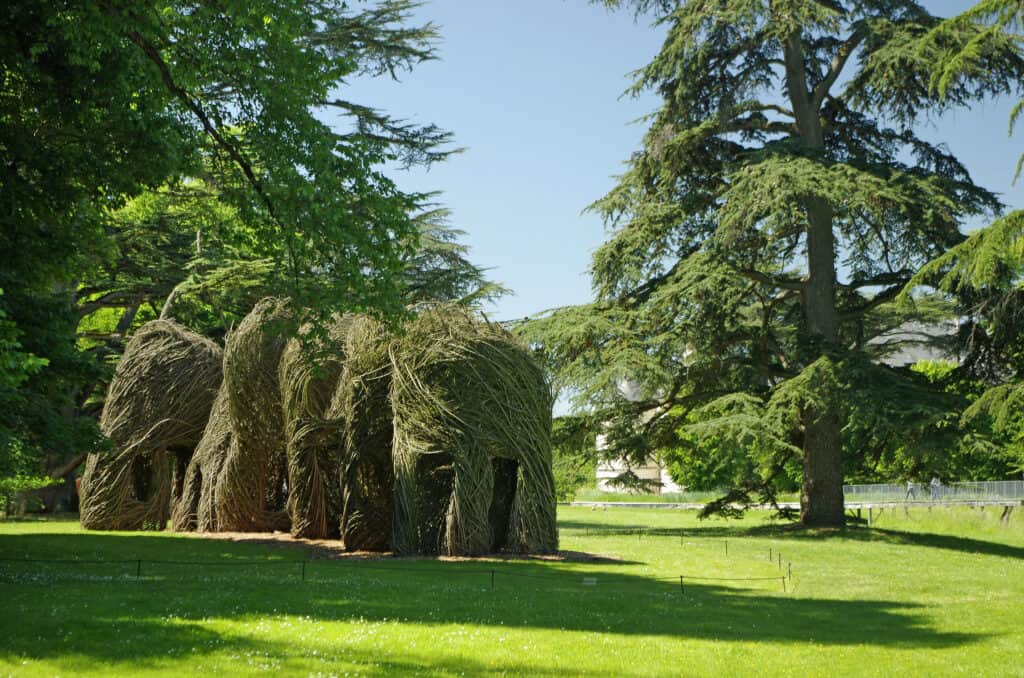
Château de Chaumont is a castle located approximately 18 km from outside Blois in the countryside.
Built before 1000, renovated by King Louis XI in 1465, and purchased by Catherine de Médicis around 1550.
This multi-towered and turreted fortress-like château is one of the oldest in France.
For Catherine de Médicis’ chamber, a gorgeous tapestry and artworks fill the château’s suites.
As a result of recent renovations, visitors may now admire the château in its original splendor and splendor.
Its English-inspired gardens are available to the public.
This château’s Center for Arts and Nature showcases contemporary “Art Season” exhibits that rotate annually.
Moreover, those painters who are just beginning their careers are showcased here with their work displayed in the gardens of the castle and the property’s castle grounds.
If you like to experience the great outdoors, visit this place right away!
Address: 41150 Chaumont-sur-Loire
Tours
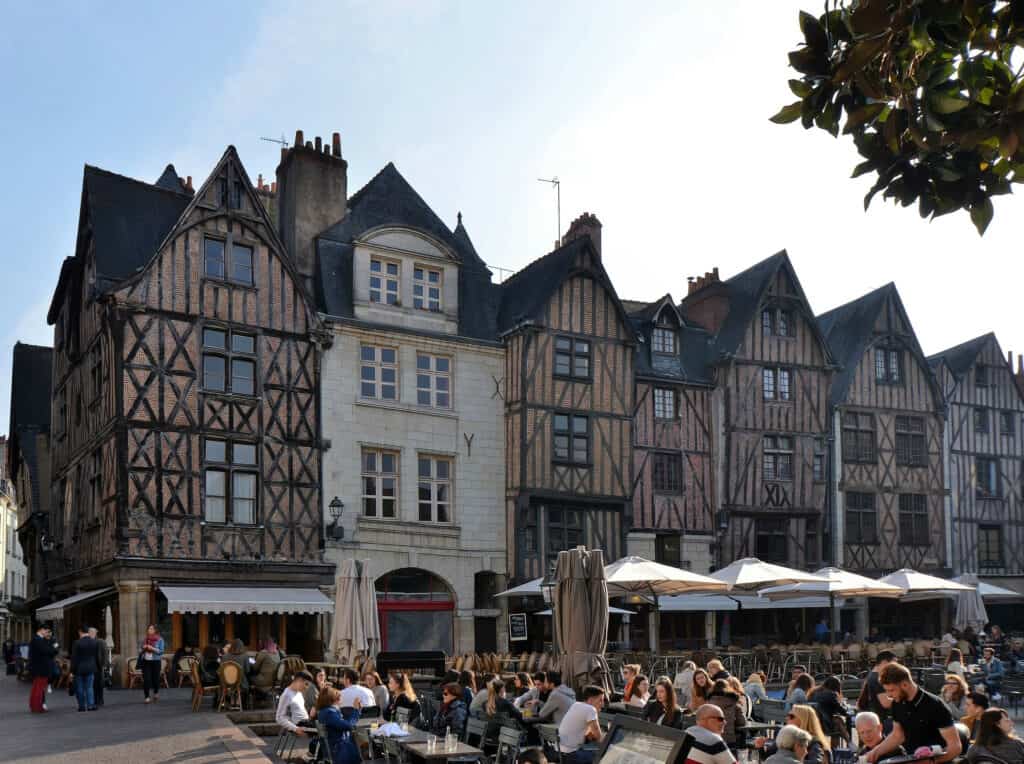
Tours, the entrance to the Loire Valley, is a must-see destination.
Taking a leisurely stroll through this old city is a great way to learn more about it. Vieux Tours’ charm may be seen in the cobblestone streets between Place Plumereau and Place du Grand-Marché (the old town).
In the Loire Valley Chateaux, Tours is a lovely place to stop for a day or two. Visit the city’s ancient districts, which feature half-timbered buildings, the lively Place Plumereau, the Saint-Gatien Cathedral, and the brand-new Olivier Debré Contemporary Art Centre. Tours are available.
Attractive half-timbered homes and a tree-lined courtyard make the Location Plumereau a great place to take a break.
Cathédrale Saint-flamboyant Gatien’s Gothic façade and magnificent vaulted sanctuary, lit by stained-glass windows from the 13th century, are all well worth a visit by tourists.
As a gateway to the Loire Valley’s famous chateaux and a Unesco World Heritage Site, Tours is the ideal location from which to explore the Loire Valley!
Château d’Angers

In the center of Angers’ historic and artistic city, the Chateau d’Angers is a massive castle dating from the thirteenth through sixteenth centuries. With 17 towers, it looms over the Maine River and provides a commanding view.
The Tapestry of the Apocalypse, a significant medieval piece of art, hangs in the château’s tapestry collection. Taking a stroll up the castle’s ramparts is a great way to get a bird’s eye perspective of the surrounding area.
The Cathédrale Saint-Maurice d’Angers, located in the ancient town of Angers, astounds tourists with its remarkable architectural elements. The expansive interior has three colossal 12th-century domes and vaulting known as “Angevin Gothic” or “Plantagenêt.”
The medieval stained-glass windows, particularly the “Glorification de la Vierge” window, are not to be missed.
Terra Botanica is definitely worth the ten-minute journey outside of Angers’ city center for families with children. This one-of-a-kind amusement park is set among amazing gardens that are home to hundreds of plant varieties. All of the park’s rides and exhibitions have a botanical theme.
- Le Mans
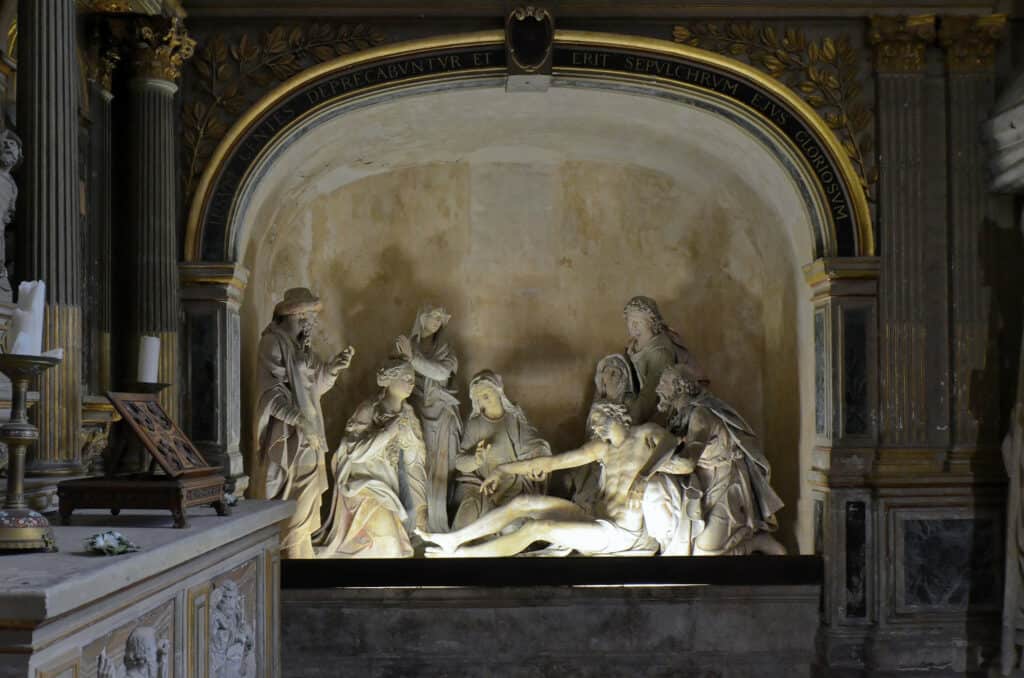
In contrast to the majority of French towns and cities, the medieval section of Le Mans is a distinct entity from the present-day town.
After the bustle of the city below, it’s almost eerie to see it from this vantage point. The majestic St. Julien Cathedral can be viewed from the parking lot in the Place des Jacobins and may be accessed by going up the steps.
There are beautiful narrow streets, stone houses with intricate details, and colombage (timbered buildings) in the old town.
The ‘Maison du Pilier rouge,’ a 16th-century half-timbered medieval house on Grand Rue in Le Mans, is the city’s most well-known example of a medieval half-timbered building.
Intriguingly, the architecture of older homes can provide this information. Upper floors that protrude forward from the lower levels are most common in older houses (usually dating back to the 15th century), and they serve two purposes: to enhance the amount of floor space above and to shield the entryway from rain.
Saumur
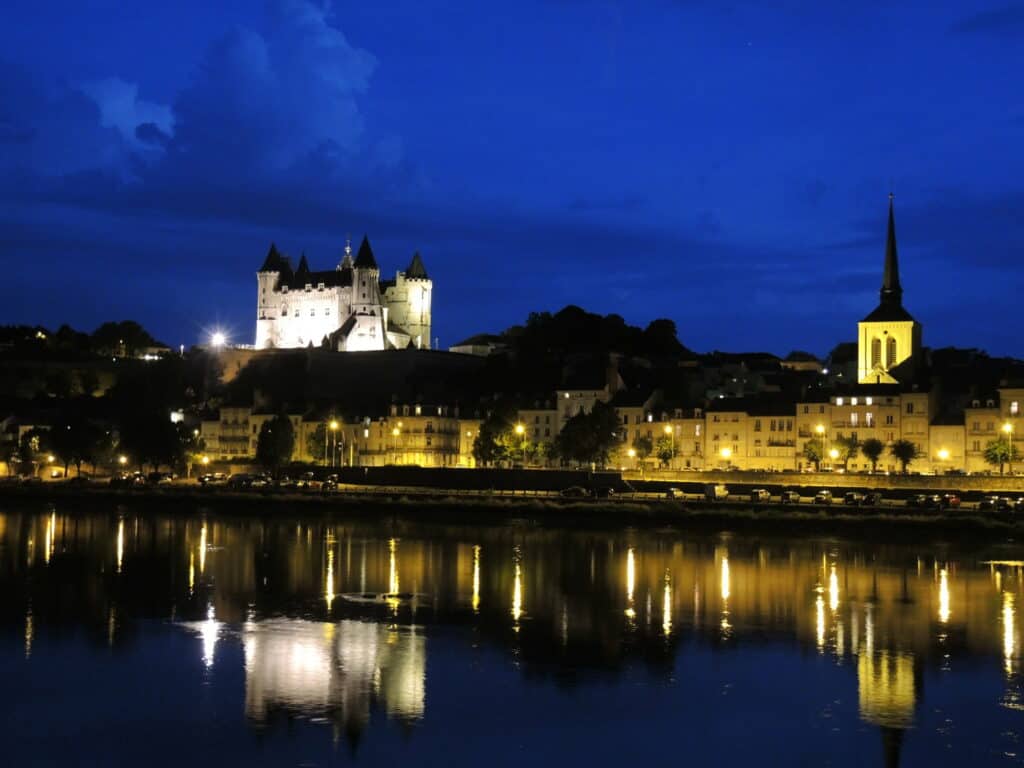
Known as “the pearl of Anjou” because of its majestic turreted château perched high above the Loire Valley, the medieval town of Saumur lies tucked away in the midst of the Anjou vineyards.
The town’s cobblestone streets run parallel to the raging river. Decorated arts and horse museums are housed at the Anjou Castle, protected by walls. Additionally, it provides a spectacular vista of the town’s rooftops and the Loire River.
Walking through Saumur’s historic center, you’ll see old timber-framed buildings and a church with stalls and tapestries in Saint-Pierre square, which is surrounded by tiny lanes with old dwellings.
Guests may take a free tour of the vaults at Veuve Amiot, which includes a video and a look at the antiquated machinery used to make wine by the employees whose photos adorn the damp walls. Take some of the wonderful bubbly homes with you when you finish your tour.
- Château de Montreuil-Bellay

The chateau boasts beautiful gardens overlooking the river, and its elevated position gives it a commanding perspective of the surrounding area.
It was built in the 11th century by Foulques Nerra, Count of Anjou, as an impregnable castle. By the end of the 15th century, the château had become more of a rural house than a fortified structure. Luxury was added to the imposing structure, including a 600-meter-long rampart and 13 fortification towers.
As a tourist attraction, the Château de Montreuil-Bellay offers guided tours of two levels: the cellars and fully-furnished ground-floor chambers, including the Duchess of Longueville’s bedroom, a well-preserved medieval kitchen, dining room, and tiny music room.
Visitors to Montreuil-Bellay may also stroll around the village’s historic center.
Saumur Castle and Fontevraud Abbey are only two of the many ancient landmarks within a short distance of Montreuil-Chateau. Bellay’s On the Loire river, the towns of Montsoreau and Candes-Saint-Martin offer a lovely addition to the itinerary.
Address: Château de Montreuil-Bellay, 49260 Montreuil-Bellay
- Château de Villandry

If you’re in the Loire Valley, Villandry Castle should be on your list of places to visit, not just because of its majestic castle but, more importantly, because of its sprawling gardens.
Villandry’s Renaissance-era gardens have made it one of France’s most popular tourist destinations.
In the 16th century, a formal ornamental garden was established. The landscape is distinguished by neat rows of trimmed shrubs and flower gardens.
Other features include a Kitchen Garden, which has attractive geometric shapes, and a Herb Garden with 30 species of culinary and medicinal herbs planted in circular beds to represent eternity.
In addition, there is a maze and a view of Villandry and its Romanesque church in the background, which are other attractions.
There are numerous weekends in July and August when the château’s grounds are lit up with 2,000 candles for the Nuits des Mille Feux (Nights of a Thousand Light).
Visitors may enjoy a moonlight stroll around the gardens while listening to live music and seeing pyrotechnics on these special occasions.
Loches
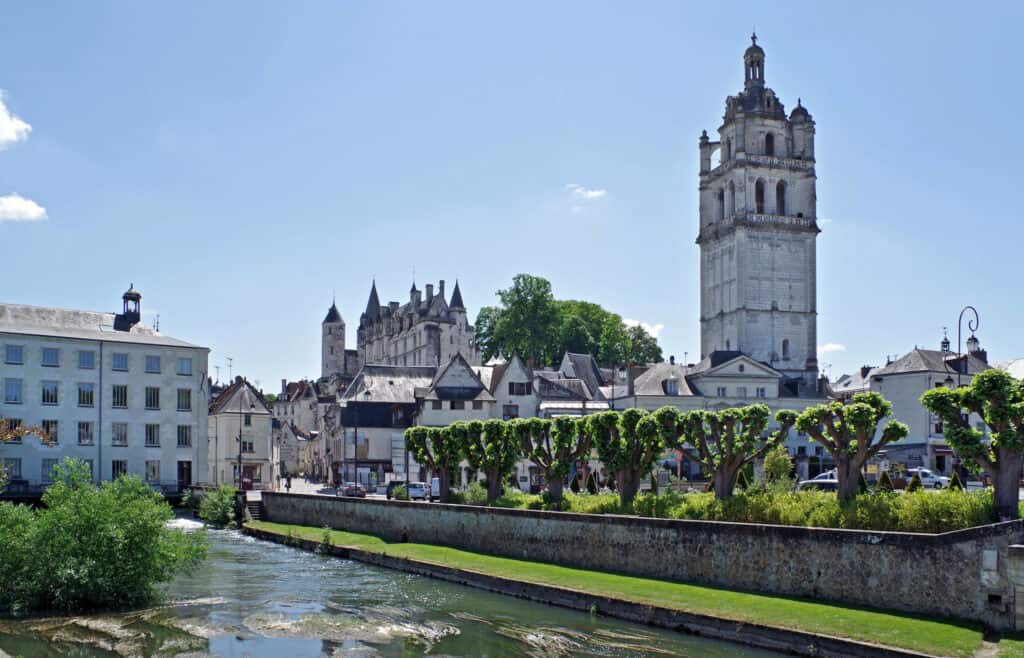
Explore the fascinating city of Loches and the hidden riches it hides.
Once inside the Royal Gate, you enter 1,000 years of history, beginning with the collegiate church of St. Ours, where you’ll find the carved wooden tomb of Agnès Sorel, the ‘Lady of Beauty,’ a favorite of King Charles VII. Next, you’ll see Foulques Nerra’s 44-meter-high keep, built around 1050.
Those who have the courage to make the ascent are rewarded with a stunning panorama of the town of Loches. You never know when you’ll run across a member of the Game of Thrones cast in one of the castle’s many dungeons or towers, with their graffiti-covered walls, tunnels, and stairways.
If you’re looking for an idyllic getaway, look no further than the royal meadows of Beaulieu-lès-Loches where you can relax at the spa Les Bains Douches or take a refreshing dip in the Naturéo aquatic park. Holidaying in France has a distinct aroma all its own.
Abbaye Royale de Fontevraud
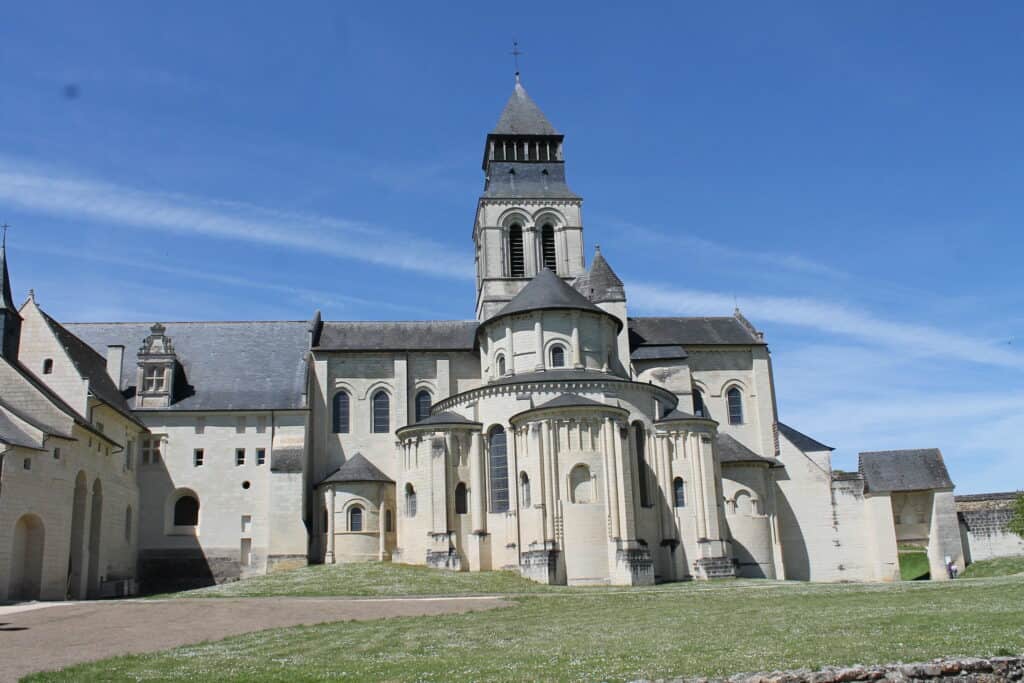
The Abbaye Royale de Fontevraud, one of Europe’s largest and best-preserved medieval monasteries, is situated in a lush valley near the Loire River in France.
An iconoclastic preacher called Robert d’Arbrissel built the Benedictine monastery in 1099, which became known for its inclusive community of individuals from many backgrounds.
Public visits to Fontevraud Abbey are available both on their own and with the help of a guide. As a tourist, you’ll be able to view the 12th-century Romanesque abbey church, its cloister, the kitchen, and the old fish smokehouse used to create smoked salmon.
The abbey’s high-end restaurant is another reason to visit. The upmarket hotel on the grounds pampers visitors with elegant, contemporary-style rooms in the historic Saint-Lazare priory, which was converted into a luxury hotel.
Fontevraud is a growing cultural tourist attraction because of the existence of a hotel and a high-end restaurant. Fontevraud aspires to cultivate and expand its audience by bringing together a way of life and cultural innovation, exhibitions, and live performances.
There is also a business center located in the abbey, which hosts a variety of activities, including seminars, meetings, and conferences.
Address: Abbaye Royale de Fontevraud, 49590 Fontevraud-l’Abbaye
Vendôme

An insider’s tip for those visiting Vendôme for the first time: start your tour at the top of the hill on the grounds of the Bourbon-Vendôme château! From here, you can see the entire city, its landmarks, and the Loir River in all its glory.
During the Middle Ages, this village served as a popular pilgrimage site. It was a pilgrims’ resting place beside the tomb of Saint Martin at Tours, France, on the way to Santiago de Compostela.
The Place Saint-Martin and the Tour Saint-Martin, the last remnants of a Renaissance church, are located in the heart of Vendôme. Additionally, there is the Chapelle Saint-Jacques, a Gothic chapel currently utilized for cultural events, and the 15th-century Eglise St. Marie–Madeleine, which has beautiful stained-glass windows.
You may learn about the city’s rich history by following the golden studs in the ground, which lead to explanatory panels at each monument. There are two city trails for you to choose from.
The view of Vendôme from the ruins of the castle that formerly belonged to the counts and dukes of Vendôme is the highlight of this trip.
Châteaudun

The château of Châteaudun, which sits on a hill above the Loir river, is a stunning example of medieval, Gothic, and Renaissance architecture.
The 12th-century “great tower,” one of France’s highest and finest preserved fortifications, appears to be dangling on its rocky peninsula.
The Château de Châteaudun greets visitors entering from the north as they reach the Loir Valley from the southwest, midway between Chartres and Blois.
Once owned by Jean de Dunois, a “bastard of Orléans” and former friend of Joan of Arc, the palace was a massive stronghold before becoming a comfortable royal residence.
An extravagant hanging garden is one of the castle’s most eye-catching features.
Also, spectacular scenery of the Loire countryside may be seen from the château’s outside patio.
The town’s attractive parks and diverse stores and restaurants will also appeal to visitors.
Aux Trois Pastoureaux, a historic restaurant that serves seasonal cuisine prepared from scratch, is a great option for travelers.
Still unsure to make Loire Valley France your next destination? Visit why visit Loire Valley, France, at least once in your lifetime here.

